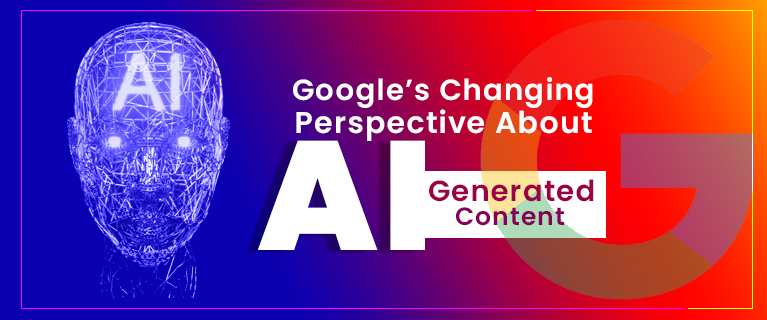Google finds itself in a dynamic landscape shaped by the increasing prevalence of AI-generated content, significantly influencing the efficacy of spam detection and content quality assessment within its search algorithms. Initially characterizing AI-generated content as spam, Google has pivoted its focus to prioritize content quality, inadvertently paving the way for the widespread dissemination of low-quality AI-generated content across the web. This shift raises critical challenges for Google in maintaining search result integrity and ensuring that users are presented with relevant and valuable information.
Despite Google’s assertion that it protects against spam in 99% of query clicks, an intriguing paradox emerges as the company indexes merely 4% of the vast array of documents encountered during its web crawling endeavour. This discrepancy underscores the complex nature of Google’s task in striking a balance between inclusivity and quality control. While the search giant has undoubtedly implemented effective mechanisms to filter out spam, the evolving landscape of AI-generated content introduces new layers of complexity, making it imperative for Google to continuously refine its algorithms.
The process of content quality evaluation is deeply intertwined with user interactions on Search Engine Results Pages (SERPs), where click data plays a pivotal role in determining the perceived quality of content. Google, acknowledging the significance of this user-centric approach, relies on past user interactions to shape future search results. This methodology, however, is not without its challenges, as the intricacies of user behavior on SERPs present a nuanced set of variables that contribute to the determination of content quality.
A noteworthy aspect of Google’s approach is its emphasis on brands within search results. Recognizing the inherent bias users have toward familiar and established brands, Google incorporates brand-related signals into its ranking algorithms. This strategic alignment with user preferences aims to enhance the overall user experience, yet it introduces potential challenges in differentiating between content from reputable sources and AI-generated content masquerading as credible information.
Google’s guidelines on AI-generated content define spam as text generated through automated processes without regard for quality or user experience. This definition reflects the company’s commitment to ensuring that content presented in search results meets certain standards of relevance and value. The advent of platforms like ChatGPT has democratized the creation of AI-generated content, raising concerns about the quality and authenticity of information available online.
Read Also This – YouTube’s Innovative Free Subscription Initiative
Instances of AI-generated content exhibit discernible patterns in their lifecycle, from initial indexing to a surge in traffic, followed by a subsequent decline. This cyclical pattern suggests that Google’s algorithms undergo a phased evaluation of content, with the potential for delayed detection of low-quality AI-generated material. The lack of immediate manual intervention from Google further emphasizes the reliance on algorithmic assessments, highlighting the need for continuous refinement to keep pace with evolving spam tactics.
Google’s multi-stage ranking process involves an initial assessment of new content, with subsequent refinements based on user interactions. The Predicting Site Quality patent provides insights into how Google predicts the quality of new sites, utilizing a relative frequency measure for various phrases. This “first guess” quality metric is later refined based on user interaction data, showcasing Google’s commitment to adaptability and responsiveness to user behavior.
Despite the complexity of Google’s ranking systems, challenges persist in keeping pace with the rapid creation of AI-generated content. The sheer speed at which generative AI systems produce grammatically correct and coherent content poses an ongoing challenge for Google’s initial evaluations. The result is an ever-growing queue of sites awaiting Google’s assessment, highlighting the inherent difficulty in maintaining real-time content quality control.
Read Also This – The Most Important SEO Tool in Today’s World
Speculation arises regarding recent updates, such as the Helpful Content Update (HCU), suggesting a potential response to the challenges posed by AI-generated content. The HCU, along with the emphasis on “hidden gems” in search results, appears to benefit user-generated content (UGC) sites, particularly those with moderation practices in place. This strategic shift may signify an interim solution to boost content quality, favoring curated user-generated content over the unpredictable nature of mass-produced AI content.
Insights from former Google employee Eric Lehman shed light on the evolving landscape, indicating a growing reliance on machine learning systems like BERT and MUM over traditional user data. These advanced systems, with their robust capabilities, are poised to play a more significant role in content parsing accuracy, potentially reducing the time required to identify and de-rank spam. However, the inherent challenge lies in continuously adapting these systems to counter emerging spam tactics effectively.
In conclusion, Google finds itself at the intersection of technological advancements and the challenges posed by AI-generated content. The company’s evolving stance on spam detection and content quality underscores the need for adaptive algorithms and continuous refinement. As AI-generated content proliferates, Google’s commitment to providing users with valuable, relevant, and trustworthy information remains central to its mission. The ongoing pursuit of effective strategies, such as the integration of advanced machine learning systems, reflects Google’s dedication to maintaining the integrity of its search ecosystem in the face of evolving online landscapes.
Read Also This – Google’s Personal Touch on Business Profile Expansions



